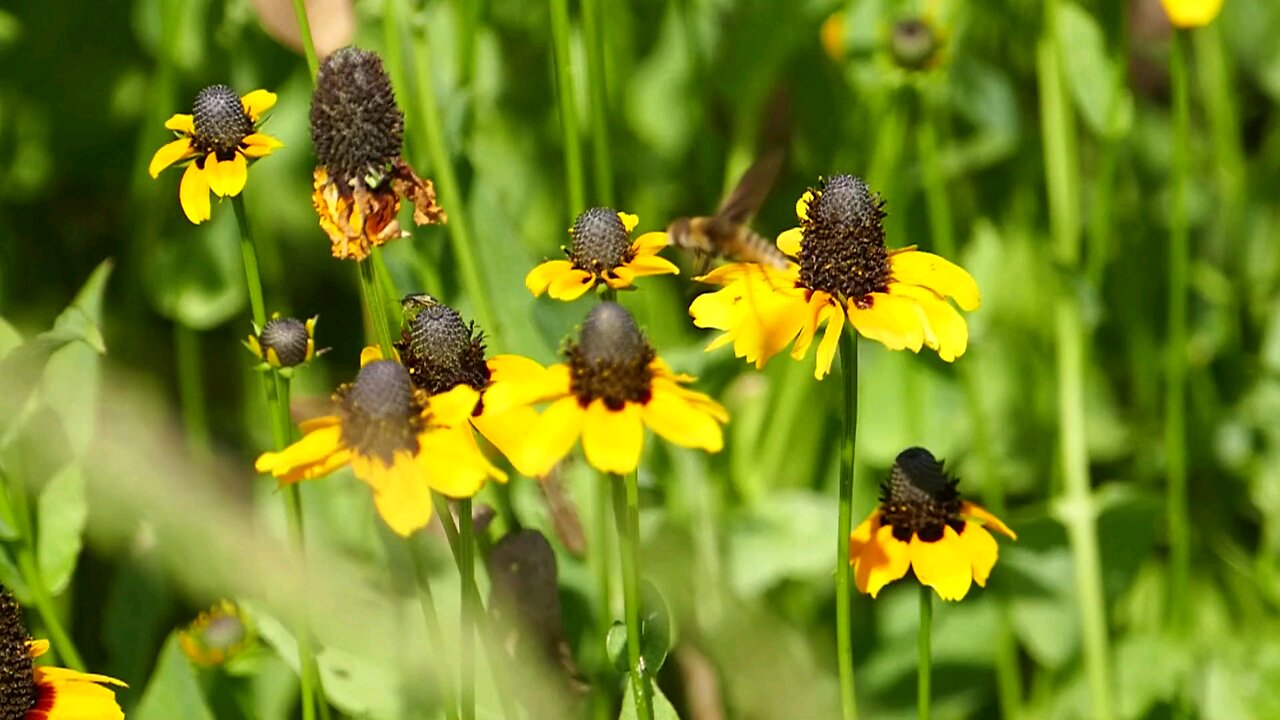Premium Only Content

"Clasping Coneflower: A Hardy Flower for Pollinators"
The clasping coneflower, scientifically known as Rudbeckia amplexicaulis, is a perennial flowering plant that belongs to the Asteraceae family. It is native to the central and eastern regions of the United States, thriving in a variety of habitats. Here’s an overview of the clasping coneflower:
Description:
Appearance: The clasping coneflower typically grows to a height of about 1 to 3 feet (30 to 90 cm). It features distinctive yellow daisy-like flowers with a central brown or black cone, giving it the classic "cone flower" appearance.
Leaves: The leaves are lance-shaped and clasp the stem, which is characteristic of the species. They are dark green and can be somewhat hairy.
Blooming Season: The flowers bloom from mid-summer to early fall, usually from July to September, providing a vibrant display during this period.
Habitat and Distribution:
Rudbeckia amplexicaulis is commonly found in prairies, open woods, and along roadsides. It prefers well-drained soils and can tolerate a range of conditions, including drought.
This species is native to a variety of states, particularly in the Midwest and the eastern United States, where it is often a part of the natural flora.
Cultivation:
Clasping coneflower is favored for its ornamental value and is often used in wildflower gardens, meadows, and naturalized areas.
It thrives in full sun but can also tolerate partial shade. It is relatively low-maintenance and can be grown in average to poor soil conditions.
Deadheading spent flowers can promote extended blooming, and the plant is generally resistant to deer and pests.
Ecological Importance:
The clasping coneflower is beneficial for pollinators, attracting bees, butterflies, and other insects. It serves as a food source for these species and helps support local ecosystems.
Uses:
In addition to its ornamental use, the clasping coneflower can be part of restoration projects, helping to reestablish native plant communities.
It may also have traditional medicinal uses, although it is not as commonly noted for medicinal properties compared to other species in the Rudbeckia genus.
Conclusion:
Rudbeckia amplexicaulis, or clasping coneflower, is an attractive and hardy plant that brings bright color and ecological benefits to gardens and natural landscapes. Its resilience and appeal make it a popular choice among gardeners and conservationists alike.
-
 LIVE
LIVE
Rallied
13 minutes agoSolo Challenges All Day
54 watching -
 LIVE
LIVE
Nerdrotic
1 hour agoThe Mysteries of Mars and the Moon with Mike Bara | Forbidden Frontier #114
363 watching -
 LIVE
LIVE
Barry Cunningham
5 hours agoPRESIDENT TRUMP IS THE TROLLER-IN-CHIEF AND MORE BREAKING NEWS!
1,357 watching -
 13:07
13:07
Robbi On The Record
2 hours agoSweet Poison: The Big Fat Lie That’s Killing America
6645 -
 1:00:09
1:00:09
Sarah Westall
1 hour agoFlorida Surgeon General: Operation Warp Speed plus Attacks on RFK Jr w/ Dr Ladapo
4.41K6 -
 11:52
11:52
Tundra Tactical
6 hours agoWhy the SIG P320 Is the King of Gun Memes 💥😂
3.32K -
 1:39:35
1:39:35
Kevin Trudeau
7 hours agoKevin Trudeau: The Complete Creation Algorithm to Manifest Your Goals & Desires
1.93K4 -
 1:11:14
1:11:14
Ohio State Football and Recruiting at Buckeye Huddle
3 hours agoOhio State Football: Instant Reaction from the 14-7 win over Texas
2.29K1 -
 18:01
18:01
Tactical Advisor
1 hour agoNew Miniature AR15 / New Guns | Vault Room Live Stream 037
8.25K2 -
 2:02:10
2:02:10
Akademiks
4 hours agoWar in RAT-LANTA. Young Thug vs Gunna vs Ralo vs YSL MONDO. Who Will Le Bebe Pick. FINAL CRASHOUT!
35.4K7